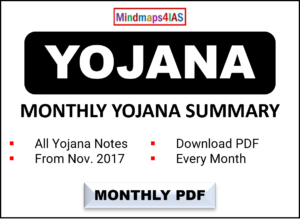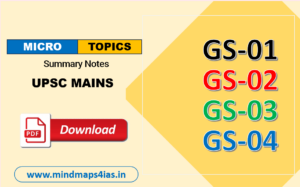Relevance: Understanding crop insurance schemes is crucial for UPSC aspirants, particularly in the context of agricultural policies, risk management for farmers, and government initiatives aimed at enhancing food security.
Why in the News?
On January 1, 2025, the Union Cabinet approved the continuation of two key crop insurance schemes — the Pradhan Mantri Fasal Bima Yojana (PMFBY) and the Restructured Weather-Based Crop Insurance Scheme (RWBCIS) — until 2025-26. Additionally, a new initiative called the Fund for Innovation and Technology (FIAT) was established with a corpus of Rs. 824.77 crore to support technological advancements in agriculture.
Key Takeaways
- Pradhan Mantri Fasal Bima Yojana (PMFBY):
- Launched in 2016, PMFBY replaced the earlier National Agricultural Insurance Scheme (NAIS) and Modified National Agricultural Insurance Scheme (MNAIS).
- The scheme operates on the principle of “One Nation, One Crop, One Premium,” providing coverage to all farmers, including sharecroppers and tenant farmers growing “notified crops” in “notified areas.”
- Initially compulsory for loanee farmers, it was revised in February 2020 to make it optional for all farmers.
- Objectives of PMFBY:
- To stabilize farmers’ income, encourage innovative agricultural practices, and ensure a steady flow of credit to farmers.
- Provides insurance coverage for failure of notified crops due to natural calamities, pests, and diseases.
- Premium Structure:
- Farmers pay a premium of:
- 2% of the sum insured or actuarial rate (whichever is less) for kharif foodgrain and oilseed crops.
- 1.5% for rabi foodgrain and oilseed crops.
- 5% for horticultural crops.
- The difference between the actuarial premium rate and the farmer’s payable premium (normal premium subsidy) is shared equally between the Centre and states.
- Farmers pay a premium of:
- Revised Subsidy Structure:
- In February 2020, the Centre restricted its premium subsidy to:
- 30% for unirrigated areas.
- 25% for irrigated areas.
- States are required to pay their share of premium subsidies within prescribed timelines; failure to do so results in disqualification from implementing the scheme in subsequent seasons.
- In February 2020, the Centre restricted its premium subsidy to:
- Restructured Weather-Based Crop Insurance Scheme (RWBCIS):
- Unlike PMFBY, RWBCIS provides insurance protection based on proxies against adverse weather conditions such as excess rainfall, wind, and temperature fluctuations.
- The number of insured farmers under RWBCIS is relatively low compared to PMFBY.
Fund for Innovation and Technology (FIAT)
- Purpose of FIAT:
- FIAT will fund technological initiatives under schemes such as:
- Yield Estimation System using Technology (YES-TECH): Uses remote sensing technology for yield estimation with at least 30% weightage on technology-based estimates.
- Weather Information and Network Data Systems (WINDS): Aims to establish Automatic Weather Stations (AWS) at block levels and Automatic Rain Gauges (ARGs) at Panchayat levels to improve weather data collection.
- FIAT will fund technological initiatives under schemes such as:
- Implementation of YES-TECH:
- Nine states are currently implementing YES-TECH: Andhra Pradesh, Assam, Haryana, Uttar Pradesh, Madhya Pradesh, Maharashtra, Odisha, Tamil Nadu, and Karnataka.
- WINDS Initiative:
- Envisions a fivefold increase in current network density to develop hyper-local weather data while minimizing costs through data rental agreements between Central and State Governments.
Beyond the Nugget: Di-Ammonium Phosphate (DAP)
- Special Subsidy on DAP:
- The Centre has extended a special subsidy of Rs. 3,500 per tonne on di-ammonium phosphate (DAP) fertilizer for an additional year starting January 1, 2025.
- Nutritional Role of DAP:
- DAP contains 46% phosphorus, essential for early root establishment and crop development; it is typically applied at sowing time along with seeds.
- Challenges with Conventional DAP Supply:
- The supply of conventional granular DAP has been unreliable due to import dependency, leading to shortages that cause panic among farmers.
- Introduction of Nano DAP:
- Developed by Indian Farmers Fertiliser Cooperative Ltd (IFFCO), nano DAP comes in liquid form and is more cost-effective and easier to manage than traditional granular DAP.
- A 500 ml bottle of nano DAP costs Rs. 600 and can cover one acre of land.
- Launch Timeline:
- IFFCO launched Nano DAP in 2023 following its earlier introduction of nano urea in 2021 as part of India’s strategy to reduce reliance on imported fertilizers.
The continuation of PMFBY and RWBCIS highlights the Indian government’s commitment to supporting farmers through effective risk management strategies amid changing climatic conditions. Understanding these schemes is vital for UPSC aspirants as they reflect broader themes related to agricultural policy, sustainability, and economic stability within India’s agrarian landscape.
















